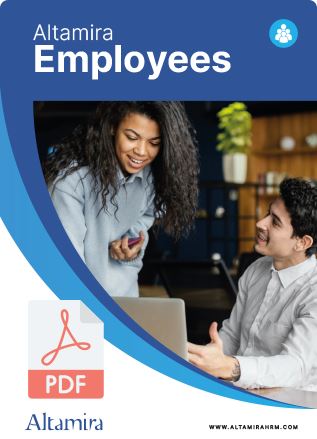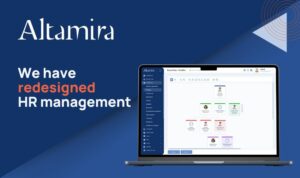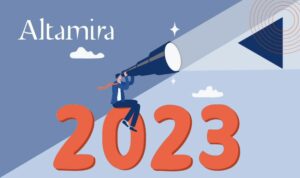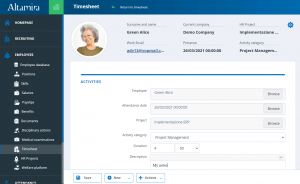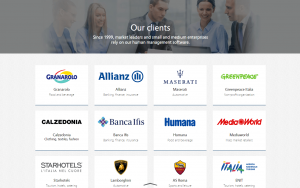In recent years, marketing and recruiting have become much closer, as concepts and strategies from the first discipline have caught on and extensively influenced the second.
That’s how we started talking about inbound recruiting, the candidate journey and employer branding, adapting the notions of inbound marketing, customer journey and branding to the HR world.
But there’s one more “lesson” that the recruiting department can learn from their colleagues in marketing (and many lessons it can teach them in turn—but that’s a topic for another day), which has to do with the concept of touchpoints.
During the application process—but also outside of it—a candidate will come into contact with your company on a variety of occasions.
Becoming aware of these contact points and fine-tuning them is a very useful exercise in order to make sure of the efficiency of your search and selection process. After all, a chain is only as strong as its weakest link.
This is why one of the “new” tasks that are the responsibility of today’s recruiters is that of monitoring all the company-candidate touchpoints and ensuring that these are positive and consistent with each other.
The contact points may vary from company to company, but the most important ones are usually the ones listed below.
The job ad
The job ad is often the first point of contact between an applicant and a company, and it is one of the most important ones. If the text of your job offers is unclear, poorly formatted and unattractive, the redemption rate can fall dramatically, limiting the number of applications received.
To improve the quality of your job offers, you can take advantage of the advice contained in the many online articles that offer hints about how to write an effective job ad. To start with, you might want to stick to these 7 golden rules:
- Find the perfect job title
- Pay attention to the form, relying on an established model
- Give details about the roles, requirements and skills required
- Make use of the keywords used by job seekers
- Add a company description at the bottom
- Keep it between 300 and 700 words.
- Don’t use corporate jargon
The search channels
There are many different channels through which candidates—whether active and passive—might come across your job offers and get in touch with your company, and it is never a good idea to limit your visibility and attention to just a few of them. Digital tools such as ATS can allow you to manage many channels at once without too much effort and with consistent communication, gathering CVs from multiple sources and then running them through a single centralized selection process.
The Career site
The “Careers” or “Work with us” section of your website is the core of your recruiting and employer branding strategy and the most frequent point of contact with candidates. That’s why you should make sure it provides plenty of valuable content about your business, and is accessible to everyone, including from smartphones.
To ensure that the relationship you establish with a candidate is not just an “occasional” one, allow them to create a personal account where they can keep track of their applications, update their CV, manage their consents for data processing, etc.
The Privacy Policy
With the advent of the GDPR, in Europe the privacy notice for the candidates’ data has gained even more importance than before. In order to help increase confidence in your company, this information must be written using language that everyone can understand. It must also clearly distinguish between the different purposes of data processing, allowing the applicant to consent or not consent to each of them. From this point of view as well, the candidate search and selection team can rely on the new features introduced in recruiting software.
Your web presence
More and more candidates are using online search engines to search for more information about a company they are interested in. Do some Google searches to check that your brand is not associated with negative episodes of any kind. Any critical points in this regard are generally handled by the marketing department, but there may be cases that concern Human Resources first and foremost, such as reviews on Glassdoor and Indeed (see below).
Reviews from employees and former employees
Candidates who visit job boards with reviews—such as Indeed and Glassdoor—can get an idea about your company from reading the reviews of employees and former employees. Generally speaking, it’s always better to answer any negative reviews in an elegant manner and with arguments instead of ignoring them, unless they are an obvious attempt at provocation.
On Indeed, you have the possibility to influence the order in which the reviews appear by purchasing a premium company page. One of the many advantages of this solution is that you can also block a particular review from being shown in the first place.
Social media
The company’s social media channels are also a source of information for candidates, which makes them a touchpoint that must be taken into account. They are usually managed by Marketing, but the latter should be willing to accept to collaborate with the HR department in activities tied to employer branding and recruiting. Some companies have social media channels dedicated exclusively to candidate search and selection, on which they’re publishing not only job offers, but also videos, images, articles and interviews to convey the company’s culture and values. Remember that every social media channel has its own tone of communication: don’t repeat the same message on both LinkedIn and Instagram!
Feedback for candidates
The absence of feedback is one of the most frequent complaints by those who take part in a selection process. Thanks to the digital tools that are supporting recruiters today, not sending at least an automated response on the reception of a CV is a serious oversight.
Then, the deeper one goes into the recruiting funnel (another term imported from marketing) and the closer one gets to being hired, the more timely and detailed the feedback should be. Even email communication is no longer enough at a certain point!
Interviews
Even as other aspects of a recruiter’s work are being increasingly delegated to technology, the interview remains—thankfully—an exclusively “human” affair.
In this important moment of contact with a candidate, the recruiter’s behavior must be impeccable and in line with the corporate image. An interview for a historic law firm and one for a technology startup cannot be conducted with the same tone.
The recruiting department also has the responsibility to train the hiring managers who are not used to this process. A little training and some guidelines will help them be consistent with the company’s employer branding strategy.
The offer letter
One of the most underestimated touchpoints between the company and the candidate is the sending of the offer letter. A well-written and well-formatted template will not be enough to impress the candidate at the decisive moment of the selection process. Show them that you’ve paid attention during your previous encounters by personalizing the letter with references to their interests and aspirations, and you will score a significant point in your favor.
Onboarding
Even if the candidate has now become a colleague, it’s still the case that their very first days of work are highly delicate touchpoints. In fact, various studies have confirmed that the impression that the newly hired person gets of the company in the first few days has a great influence on the length of their stay.
Make their integration into the company easier through an effective onboarding program, while keeping these 10 tips in mind.
The notion of touchpoints can also be successfully applied to the relationship with employees. Accordingly, when you’re developing the staff engagement strategy, remember to consider every particular moment of interaction with the company.
Image copyright: ©Gajus/Adobe Stock


